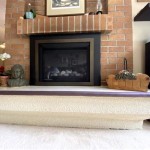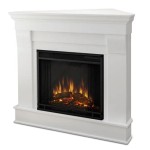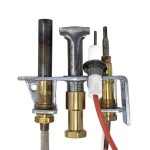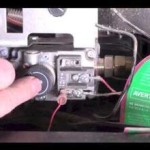Understanding Fireplace Gasket Rope: A Comprehensive Guide
Fireplace gasket rope, often overlooked yet crucially important, plays a vital role in the efficient and safe operation of wood-burning stoves, fireplaces, and fireplace inserts. This seemingly simple component forms an airtight seal that prevents dangerous gases and smoke from leaking into the home, while also optimizing the combustion process for increased heat output and fuel efficiency. This article provides a detailed exploration of fireplace gasket rope, covering its purpose, types, installation, maintenance, and troubleshooting common issues.
The primary function of fireplace gasket rope is to create a tight seal between the stove door or glass and the stove body. This seal prevents the leakage of carbon monoxide, smoke, and other combustion byproducts into the living space. Without a proper seal, these harmful gases can pose serious health risks to occupants. Furthermore, an air-tight seal allows for better control of the air intake, enabling the stove or fireplace to burn more efficiently and produce more heat from the same amount of fuel. A leaking seal results in uncontrolled airflow, leading to rapid burn times, reduced heat output, and increased fuel consumption.
The importance of a well-maintained gasket rope extends beyond safety and efficiency. It also contributes to the overall longevity of the appliance. By preventing excessive heat loss, the gasket rope helps to maintain a consistent temperature within the firebox, reducing stress on the stove’s metal components. This, in turn, can prolong the lifespan of the stove and minimize the need for costly repairs.
Key Point 1: Types of Fireplace Gasket Rope
Fireplace gasket rope is available in various materials, sizes, and shapes, each suited for specific applications and stove designs. Understanding the different types is essential for selecting the correct replacement gasket for your appliance.
Material Composition: The most common materials used in fireplace gasket rope include fiberglass, ceramic fiber, and aramid fiber. Fiberglass gasket rope is the most widely used due to its affordability, heat resistance, and availability. It is suitable for most standard wood-burning stoves and fireplaces. Ceramic fiber gasket rope offers superior heat resistance and durability compared to fiberglass, making it ideal for high-temperature applications and stoves that experience prolonged periods of intense burning. Aramid fiber gasket rope, often referred to as Kevlar, is exceptionally strong and resistant to wear and tear. It is a premium option for stoves that require a particularly robust seal.
Shape and Diameter: Gasket rope is typically available in round and square profiles. Round rope is the most common and is suitable for grooves designed to accommodate a circular shape. Square rope is often used in stoves with flat surfaces or wider grooves. The diameter of the rope is critical for achieving a proper seal. Too thin, and it will not adequately fill the gap, resulting in leaks. Too thick, and it may prevent the door from closing properly or compress excessively, leading to premature wear. Consult the stove manufacturer's specifications to determine the correct diameter for your appliance. If the documentation is unavailable, carefully measure the existing gasket or the groove where the gasket sits to determine the appropriate size.
Adhesive Backing: Some gasket ropes come with an adhesive backing for easier installation. This feature allows the gasket to be temporarily secured to the stove door or frame while the adhesive cures. While adhesive-backed gaskets can simplify the installation process, it is still important to use a high-temperature silicone sealant to ensure a long-lasting and airtight seal. The adhesive backing primarily serves to hold the gasket in place during the initial installation, not as a primary bonding agent.
When selecting a gasket rope, consider the operating temperature of your stove, the shape and size of the groove, and the ease of installation. Choosing the right type of gasket will ensure a proper seal, optimal performance, and prolonged service life of your wood-burning appliance.
Key Point 2: Installation Process and Essential Tools
Replacing a fireplace gasket rope is a relatively straightforward task that can be accomplished with a few essential tools and a careful approach. Proper installation is crucial for achieving a reliable and long-lasting seal. Neglecting certain steps can lead to premature failure of the gasket and compromise its effectiveness.
Required Tools: The necessary tools for gasket rope replacement include a scraper or putty knife, wire brush, high-temperature silicone sealant, measuring tape, utility knife or scissors, and safety gloves. The scraper or putty knife is used to remove the old gasket and any residual adhesive. The wire brush helps to clean the groove, ensuring a smooth and debris-free surface for the new gasket. High-temperature silicone sealant is essential for bonding the gasket to the stove door or frame and creating an airtight seal. Measuring tape is necessary for accurately determining the length of gasket rope required. The utility knife or scissors are used to cut the gasket to the correct length. Safety gloves protect the hands from cuts and irritation caused by the gasket material and sealant.
Step-by-Step Installation: The first step is to remove the old gasket. Use the scraper or putty knife to carefully pry the old gasket from the groove. If the gasket is heavily bonded, applying heat with a heat gun or hairdryer can help to soften the adhesive. Once the old gasket is removed, thoroughly clean the groove with the wire brush to remove any remaining adhesive, rust, or debris. This ensures a good bond between the new gasket and the stove surface.
Next, measure the length of the groove where the gasket will be installed. Add a few extra inches to allow for slight overlap when joining the ends of the gasket. Cut the new gasket rope to the measured length using the utility knife or scissors. Apply a thin bead of high-temperature silicone sealant to the groove. Press the gasket rope firmly into the sealant, ensuring it is evenly seated and making good contact with the metal surface. If the gasket rope has an adhesive backing, peel off the protective strip and press the gasket into place.
When you reach the end of the groove, overlap the ends of the gasket slightly. Cut the overlapping section at an angle to create a smooth joint. Apply a small amount of silicone sealant to the joint and press the ends together firmly. Close the stove door or glass and allow the silicone sealant to cure completely according to the manufacturer's instructions. This usually takes at least 24 hours. Avoid using the stove during the curing period to allow the sealant to fully harden and create a strong bond.
Following these steps carefully will ensure a proper installation and a long-lasting, airtight seal. Regularly inspect the gasket for signs of wear and tear and replace it as needed to maintain the safety and efficiency of your wood-burning appliance.
Key Point 3: Maintenance, Inspection, and Troubleshooting
Proper maintenance and regular inspection of the fireplace gasket rope are essential for maintaining its integrity and ensuring the continued safe and efficient operation of the stove or fireplace. Addressing minor issues promptly can prevent more significant problems and extend the lifespan of the gasket.
Regular Inspection: The gasket rope should be inspected at least once a year, preferably before the start of the heating season. Look for signs of wear and tear, such as fraying, cracking, hardening, or compression. Pay particular attention to areas where the gasket is exposed to high heat or frequent friction, such as around the door latch or along the bottom edge of the door. If the gasket appears damaged or deteriorated, it should be replaced immediately.
Cleaning and Maintenance: Periodically cleaning the gasket can help to remove soot and creosote buildup, which can harden the gasket and reduce its effectiveness. Use a soft brush or cloth to gently wipe the gasket clean. Avoid using harsh chemicals or abrasive cleaners, as these can damage the gasket material. If the gasket becomes excessively dirty, it may be necessary to remove and clean it separately. However, this should be avoided if possible, as it can weaken the bond between the gasket and the stove door or frame.
Troubleshooting Common Issues: One common issue is smoke leaking from around the stove door or glass. This is often a sign that the gasket is worn or damaged and needs to be replaced. It can also indicate that the door is not closing properly or that the latch is loose. Another issue is difficulty closing the stove door. This can be caused by an overly thick gasket or by debris obstructing the door's closing mechanism. Ensure you've used the proper size gasket for your stove. If the gasket is the correct size, inspect the door and frame for obstructions and remove any debris. If the door still does not close properly, it may be necessary to adjust the latch or hinges.
Addressing Hardening Gaskets: Over time, fireplace gasket rope can become hard and inflexible, reducing its ability to create an airtight seal. This is often caused by prolonged exposure to high heat and the accumulation of soot and creosote. If the gasket is only slightly hardened, it may be possible to restore its flexibility by applying a small amount of high-temperature silicone sealant. Use a clean cloth to wipe the sealant onto the gasket, working it into the fibers to soften the material. If the gasket is severely hardened, it should be replaced. Attempting to force a hardened gasket to conform to the door or frame can damage the gasket and compromise its effectiveness.
By performing regular inspections, cleaning the gasket as needed, and addressing common issues promptly, you can ensure that your fireplace gasket rope remains in good condition and continues to provide a safe and efficient seal for your wood-burning appliance. Replacing the gasket rope when necessary is a small price to pay for the peace of mind that comes with knowing your stove is operating safely and efficiently.

Easy Fireplace Insert And Wood Stove Gasket Finder

7 8 In Rope Gasket 100ft Roll

1 4 Rope Gasket By The Foot

Imperial White Gasket In The Wood Pellet Stove Accessories Department At Com

Mosey 1 Roll Of Fireplace Tape Seal Rope Gasket Self Adhesive Prevent Smoke Leakage Accidents High Temperature Resistant Wood Stove Flat Com

Rutland Rd 724 Grapho Glas Spooled Rope Stove Gasket 5 8 Inch Diameter 65 Ft

Breckwell Door Rope Gasket Kit 5 8in X 6ft

Fireplace Seal Rope Fire Resistance Gasket Wood Stove Door

Self Adhesive Flat Oven Rope Fireplace Sealing Cord Fiberglass Gasket Tape Door 10mm Width Com

Imperial Stove Rope Gasket 3 8 X 78 Ga0187 Rona
Related Posts








